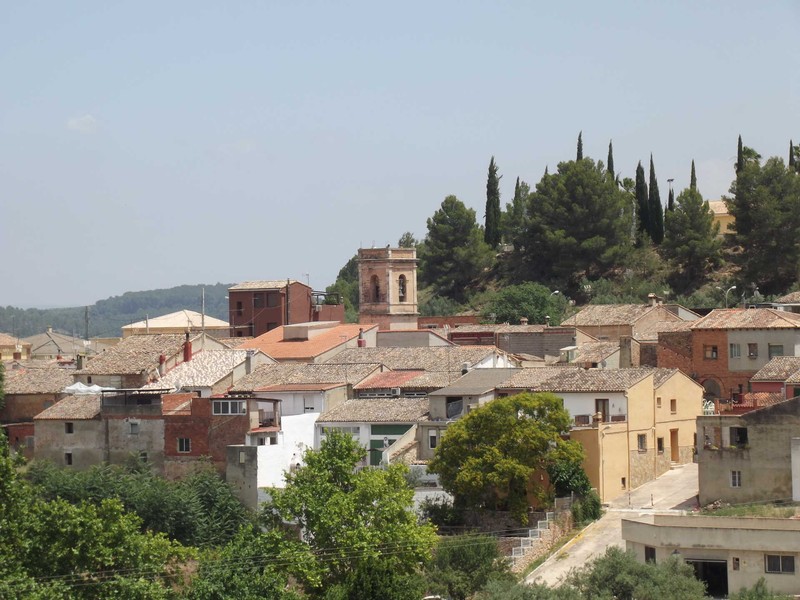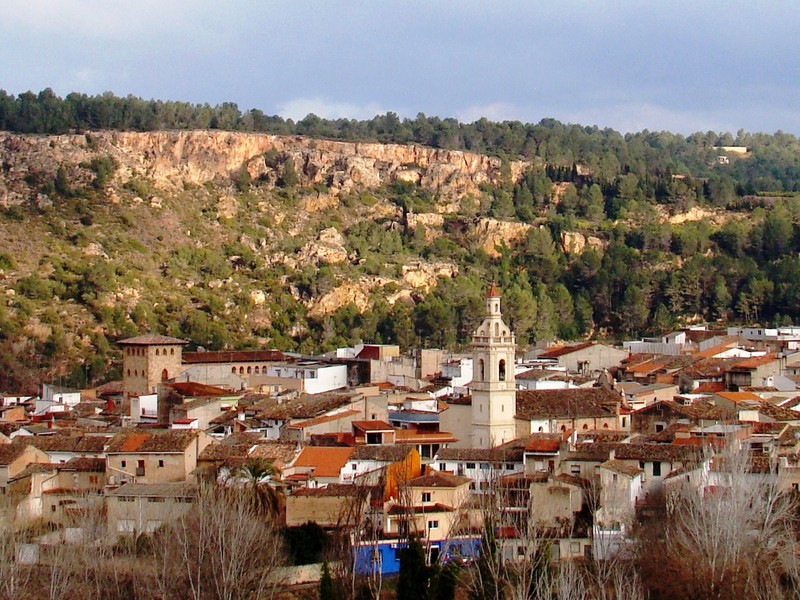Pico Caroche (Bicorp)
The Caroche or Caroig peak is a mountain of 1,126 meters, located in Teresa de Cofrentes, Spain. It is situated
During the Muslim period, Chella was a small village that Jaime I donated to Pere Dovit, although later it was reintegrated into the crown. In 1341, the king granted it to Tomás de Ulmis, from whom it passed in 1356 to the count of Denia and later to the duchy of Gandía. In 1611, Carlos de Borja issued a population charter, after the expulsion of the Moriscos. Subsequently, it belonged to the Marquis of Bélgida.
Despite the existence of archaeological remains of an Iberian settlement, located in the area of Los Secanos de Arriba, as well as a Roman farm in the current house of Fulgencio and remains of Muslim dwellings in the caves of Peña del Turco, the present municipality of Chella has its origin in a Muslim small village, located in the current square of the Old Church, where a part of the wall of the mosque is still preserved with a niche containing the Virgin of Grace, the patron saint of the town. In 1244, Jaime I conquered the region and Al-Azraq, a Muslim leader, rebelled against him, along with the inhabitants of Chella. After being defeated, they were expelled, and the town was repopulated with Muslims loyal to the king. The population was successively given in fief to Tomás de Ulmis, the Count of Denia, Pedro Escintelles, and the first Duke of Gandia (Alfonso el Vell), upon whose death it returned to the Crown. During the Germanies, the Moriscos of Chella were forced to be baptized, and the parish of Bolbaite was separated from that of Chella. With Carlos de Borja, it returned to the hands of the Dukes of Gandía and Counts of Oliva; and in 1609, Philip III ordered the expulsion of the Moriscos, and Chella was completely abandoned until 1611. It was then when the population charter was granted, and new settlers were established (the Llobregat, Granero, García, Esparza, Palop, etc.).
In this century, the population grows from the medieval town; the remains of the Muslim castle remain in the upper part, now the neighborhood of La Peña. This development was consolidated in the 18th century when the feudal lords were no longer the Borja, but the Marquises of Bélgida. In the War of Succession, Chella ceased to belong to the governance of Játiva and passed to the district of Montesa with the neighboring towns of Anna, Enguera, and Estubeny. All these towns were affected by the earthquake of March 23, 1748, which destroyed the old church of Chella, thus accelerating the construction of the new one (1763) in neoclassical style and Latin cross, with a bell tower with corners oriented to the cardinal points and preserving its first bell, María de Gracia, from 1789.
The Caroche or Caroig peak is a mountain of 1,126 meters, located in Teresa de Cofrentes, Spain. It is situated
You will love La Canal de Navarrés! It’s an ideal destination for the whole family, to discover with friends, and

Estubeny, located in the interior of the province of Valencia, is an inland destination that hides a unique natural space,

Anna is a beautiful municipality in the Canal de Navarrés, well known for its Anna Lake, a lagoon surrounded by
Copyright © 2023. La Canal de Navarrés. All rights reserved.
Do not hesitate to contact us for any further information.
This website uses cookies so that we can provide you with the best user experience possible. Cookie information is stored in your browser and performs functions such as recognising you when you return to our website and helping our team to understand which sections of the website you find most interesting and useful.
Strictly Necessary Cookie should be enabled at all times so that we can save your preferences for cookie settings.
If you disable this cookie, we will not be able to save your preferences. This means that every time you visit this website you will need to enable or disable cookies again.